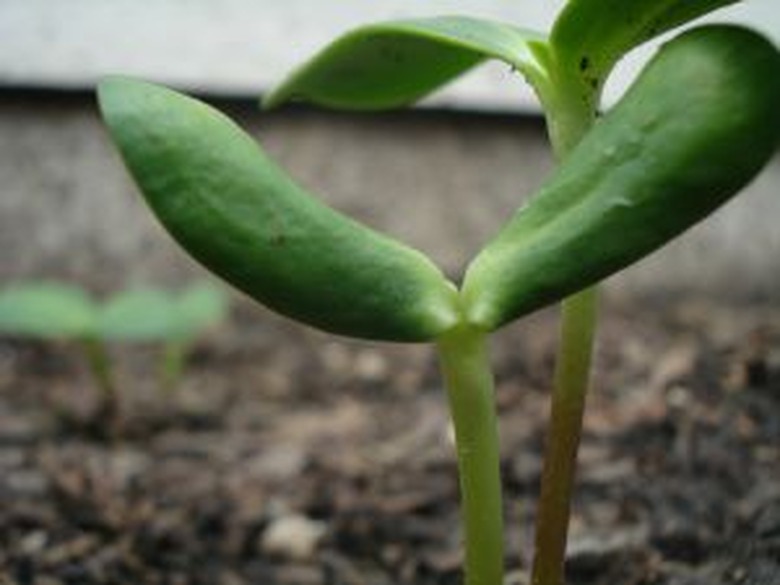How To Plant Sprouted Seeds
Things Needed
- Pots
- Soil
- Fertilizer
Tip
Pick up seedlings to transplant by the seed hull or leaves to avoid damaging the roots. Transplant sprouted seeds directly into the garden instead of a pot.
Warning
Space seeds a few inches apart when sprouting so the roots don't become tangled.
Transplanting sprouted seeds requires caution to avoid damaging the delicate roots and first shoots of the plant. Seeds are first germinated in trays of soil-less starting mix, between wet towels in plastic bags or in jars of water. They must then be transplanted into individual containers that give them room to grow and develop before finally being transplanted to the garden. Sprouting then planting into soil works well for thick coated seeds such as beans or for older seeds that you are unsure will sprout traditionally.
Step 1
Plant into a soil mix once a root has formed on towel-sprouted seeds but before the leaves emerge from the seed casing. Transplant seeds sprouted in soil-less mixture once the first true set of leaves form. True leaves are the second set of leaves the seedling produces; the first set of leaves is the same for all seedlings.
- Transplanting sprouted seeds requires caution to avoid damaging the delicate roots and first shoots of the plant.
- Transplant seeds sprouted in soil-less mixture once the first true set of leaves form.
Step 2
Choose small containers that are between 4 and 6 inches in diameter. Use containers with bottom drainage holes and set them in a tray to catch the excess water.
Step 3
Fill containers with a soil mix. Use a potting mix formulated for seed starting or mix equal parts compost and peat moss with a handful of vermiculite to make your own.
Step 4
Water each container thoroughly until the soil is equally damp but not soaking wet.
Step 5
Poke a hole in the center of each pot that is 1/2 inch deep and as wide around as your little finger. Place the sprouted seed into the hole root side down and cover loosely with soil.
- Choose small containers that are between 4 and 6 inches in diameter.
- Use a potting mix formulated for seed starting or mix equal parts compost and peat moss with a handful of vermiculite to make your own.
Step 6
Place in a warm, sunny window. Keep the soil moist at all times. Water from the bottom of the container to encourage strong roots and avoid disturbing the seedling.
Step 7
Fertilize with a half-strength liquid fertilizer when the seedling is 4 weeks old. Transplant outdoors after the last frost or when advised on the seed envelope.
